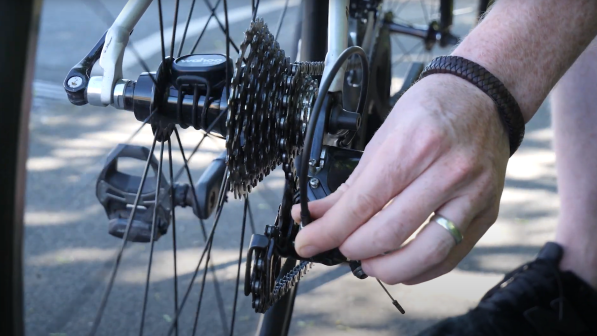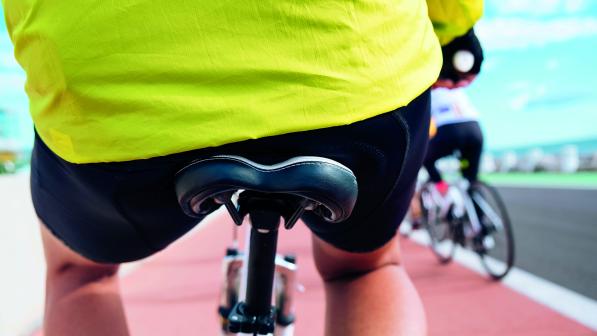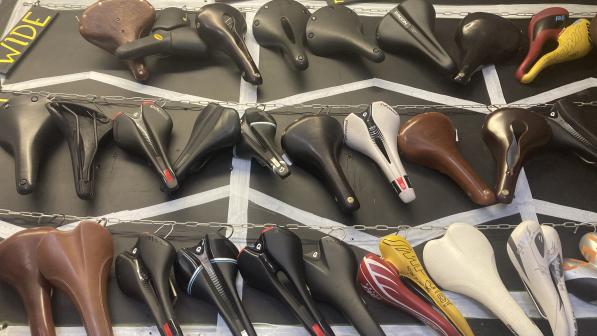Video guide: How to set the correct saddle height
By Cycling UK
An incorrect saddle height can lead to:
- Knee pain
- Saddle discomfort
- Loss of pedalling power
- Hip rocking or numbness
The good news? You don’t need to be a bike mechanic to get it right. With just a few simple steps, you can quickly find a saddle height that works well for you.
Finding the right saddle height
Method 1: The heel method (quick and easy for beginners)
This is a quick and easy method for beginners.
Instructions:
- Lean against a wall or ask someone to hold your bike steady.
- Sit on the saddle and place your heel (not your toes) on the pedal.
- Rotate the pedal to the bottom of the pedal stroke (6 o’clock position).
- Your leg should be completely straight when your heel is on the pedal:
- If your leg is bent this means the saddle is too low
- If you can’t reach the pedal this means the saddle is too high
- Once this is set, switch to riding with the ball of your foot on the pedal – your leg should now have a slight bend (25-30°) at the bottom of each pedal stroke.
Method 2: Inseam formula (more precise approach)
This method uses your body measurements to calculate your ideal saddle height.
Instructions:
- Measure your inseam:
- Stand against a wall, barefoot
- Place a book between your legs (similar to saddle pressure)
- Measure from the floor to the top of the book in centimetres
- Multiply your inseam by 0.883:
- This gives your saddle height from the centre of the bottom bracket to the top of the saddle
Example:
- If your inseam measures 78cm, this would work out as 78 × 0.883 = 68.87cm saddle height.
Use a tape measure to set this height as accurately as possible.
How to adjust the saddle height
- Use a hex key or the appropriate tool to loosen the seat post clamp.
- Adjust the saddle up or down to your target height.
- Tighten the clamp securely before riding.
Final fit check
Before hitting the road, check for the following:
- Your hips don’t rock side to side while pedalling.
- Your knees stay aligned with the pedals.
- You feel comfortable with no strain and no overextension.
You’ll know you've got it right when after a ride you don’t feel pain in your knees, hips or lower back.


